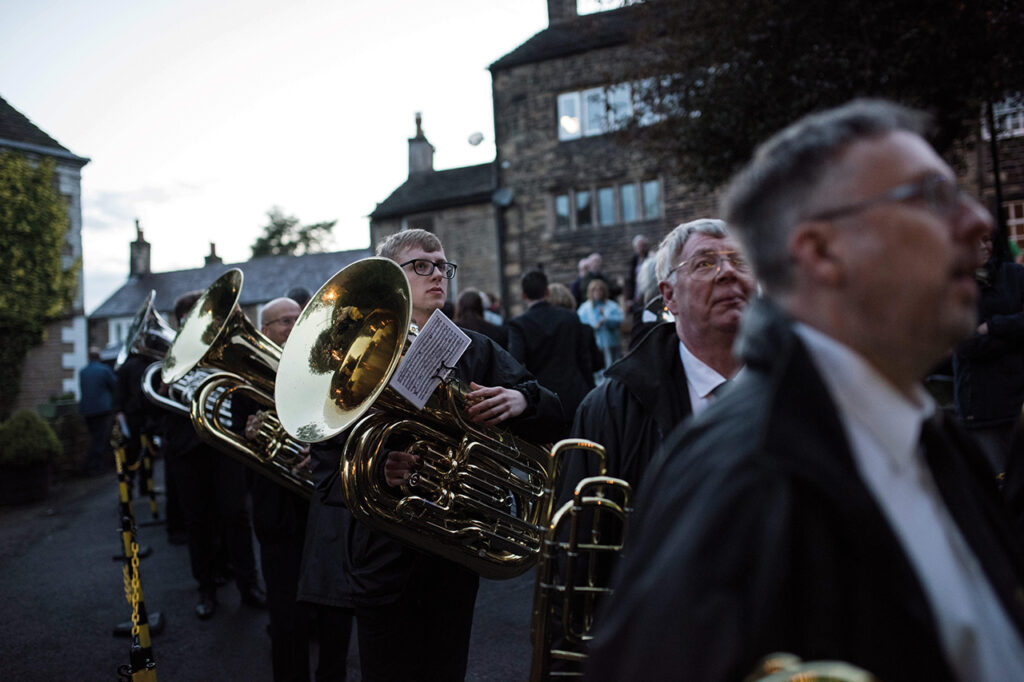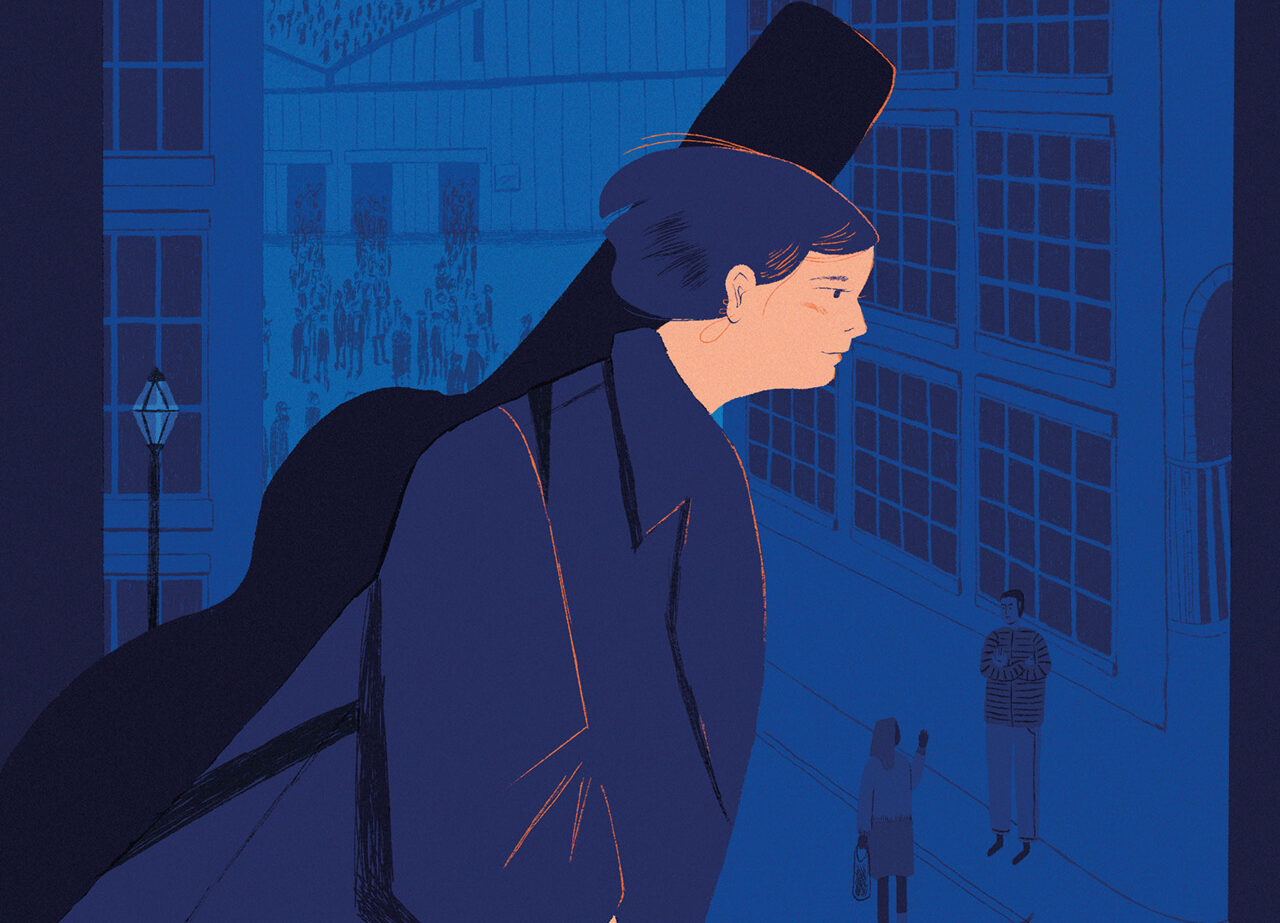Northern state of mind
Since the earliest humans arrived here from the continent, the North has helped to shape the world says Brian Groom, author of a major book on Northerners
Where exactly is the North? Who is entitled to call themselves a Northerner? Nailing the precise boundaries of the North of England has been a difficult and ultimately elusive task for generations. Even the author of a new book entitled Northerners was unable to come up with a definitive answer. In the end, he says, the North is almost a state of mind.
“The North is considered to be broadly where the people who live there think they are in the North,” according to the author Brian Groom, a former senior Financial Times journalist, originally from Stretford.
“The region has rarely been a single administrative unit, so the question is more cultural than constitutional.”
The last time there were clearly defined administrative borders was between the years 654 and 954AD when it formed the Anglo-Saxon kingdom of Northumbria, which extended from the Humber through the Peak District to the Mersey in the south and as far north as the Firth of Forth in Scotland.
All the Anglo-Saxon kingdoms were inherently unstable, says Groom, giving Northumbria less chance of surviving to become an independent state.
“The king needed constantly to be gaining new territory so he could reward his followers. If he didn’t, other people would try to steal his throne. None of these kingdoms had any governmental infrastructure, so [the kings] were just warlords really, and never likely to survive in the long term.”
Today, the North has for government and statistical purposes three obvious boundaries: the North Sea, the Irish Sea and the Scottish border. Below the latter we recognise as being Northern the regions of the North West, North East, and Yorkshire and Humber. The grey zone comprises the counties of Nottinghamshire, Derbyshire and Staffordshire.
But wherever the North’s southern line is drawn, those in the South who perceive a North-South divide have insultingly written off the North as the back end of the English economy’s pantomime horse, says Groom. This is despite it being the founding region of the Industrial Revolution, the “key event in human history”, he emphasises. Just after the First World War the North’s industries like coal mining, iron, steel, shipbuilding and textiles accounted for a staggering 30 per cent of Britain’s entire economic output.

It was out of this industrial landscape that the tough, no-nonsense character most people recognise as Northern was forged, shown not least by the radicalism and gritty determination of early suffragists from the industrial towns of the North West, and the founding of the Independent Labour Party – forerunner of today’s party – in Bradford.
However, the decline of its great industries had already begun in the first part of the 20th century, and accelerated after the Second World War, but in his book Groom points out that Northerners then found new ways of making their mark in the world – through culture.
“To Arthur Conan Doyle [creator of Sherlock Holmes] it was clear: excellence in music, poetry and art largely existed south of Lincoln, while those who excelled in engineering, science and theology mostly came from the North.”
That contrast may have appeared elementary to Conan Doyle in Victorian times, but in the longer term it turned out to be completely wrong, as Groom demonstrates by reciting a remarkable roll call of Northerners who have over the past century been at the forefront of culture both domestically and internationally.
There were poets like WH Auden, Ted Hughes and Philip Larkin; novelists like JB Priestley, Anthony Burgess and John Braine; playwrights like Willie Russell, Alan Bleasdale and John Godber; artists like LS Lowry, David Hockney and Damien Hirst; and sculptors like Henry Moore, Barbara Hepworth and Antony Gormley.
And, of course, there has been the music. Before and after the Second World War, Rochdale’s Gracie Fields and Wigan’s George Formby were among the world’s biggest recording and film stars, but their success was eclipsed in the1960s by the global phenomenon of Beatlemania and Mersey Beat, followed by the later music scenes of Madchester and Sheffield.
Groom says Gormley saw his famous Gateshead sculpture, Angel of the North, as a reminder that coal miners had worked beneath it in darkness for two centuries, as well as being an expression of the North’s transition from the industrial to the information age, which, like sculpture, was an evolving thing. Groom adds that it seems an appropriate symbol for how art has helped Northerners to think about themselves, their communities and their future.
“There are so many stereotypes about the North, often perpetuated by Northerners themselves.”
But the North has not been without internal rivalries. This is nothing new, he says, citing the example of Athens squaring up to Sparta in Ancient Greece. Thus Liverpool’s 19th century middle classes who were engaged in insurance, finance and shipping are said to have looked down their noses at Mancunians for earning their living from smoky, dirty cotton manufacturing, while Sheffield steelmakers saw themselves morally superior to Leeds’s quick-profit tailoring trade. A century later the rivalries still exist, but manifest themselves mainly in support for football teams, or in the case of Lancashire and Yorkshire, cricket.
Meanwhile, the industries that saw the North contribute so much to world history, like putting Yorkshire Dales lead on the Vatican roof and Redcar steelworks providing the girders for Sydney Harbour Bridge, have disappeared or declined in the last few decades. But Groom points out that the economy of the North is still bigger than entire countries, including Argentina, Belgium, Denmark, Ireland, Norway and Sweden.
The de-industrialisation wrecked many communities, something successive governments have tried, but failed, to put right. Groom writes of an ever-changing roster of regional policies and regeneration initiatives that were often half-hearted and inconsistent.
“Each new set of politicians tend to throw out what the previous lot have attempted to do,” he says. “I mean, since the Conservatives in 2010 we’ve had first David Cameron’s rebalancing, which meant very little at all, then we had George Osborne’s Northern Powerhouse, which at least had some elements of policy to it. But then Boris Johnson came in and we’ve hardly heard of the Northern Powerhouse. It’s been dropped as a concept. And now we’ve got the vague levelling up idea. The big question is whether anything will be delivered that will make any realistic difference.”
Talking about the North-South divide, he recalls that in the 1980s Margaret Thatcher controversially announced she had actually abolished it. Her paymaster general Kenneth Clarke, later John Major’s chancellor of the exchequer, also appeared to wish away the divide, describing it as a ridiculous simplification that reinforced “the cloth cap and brass band image the South has of the North”.
Compared with earlier attempts to define Northerners, though, Groom’s book makes Clarke’s caricature seem almost affectionate. Before the 19th century Northerners had been written off as “backward or barbaric”, and Groom mentions as examples a 12th century historian blaming the fall of mighty Northumbria on “the prevalence of degenerate manners”, and one of Henry VII’s advisers describing Northerners as “savage”.
So how are they seen now? Is Clarke’s image from the 1980s of cloth caps and brass bands fair today?
Groom thinks for a moment. “There’s an element of truth to it,” he says, and admits that he himself possesses a flat cap, “though I don’t wear it very often”, while his house in the village of Greenfield to the east of Oldham happens to be on the route of the famous Saddleworth brass band contest.
“But there are so many stereotypes about the North, often perpetuated by Northerners themselves. To some extent they are self-affirming. The further you live from the centre of power then groups of people will tend to create a collective, self-affirming image for themselves. On the other hand they are caricatures, and they are an over-simplification. Northerners are a big collection of individuals who are very, very different.”
So how might the author of a book about Northerners characterise Southerners?
“I guess you’d say effete, evasive, over-privileged,” he replies. And possibly guaranteeing poor sales of a companion book entitled Southerners, which he says he has no plans to write, Groom adds: “And stuck up.”
Northerners: A History from the Ice Age to the Present Day, by Brian Groom, is published by Harper North and out now

Leave a reply
Your email address will not be published.